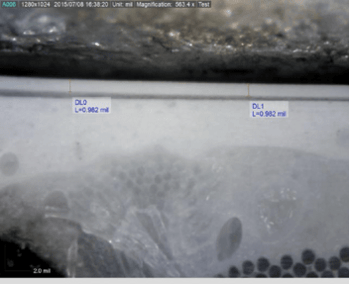PVC-Coated Fabrics Suited for Your Building Project
Most structure fabric materials are durable and able to work for many types of buildings when manufactured, inspected and installed correctly. At a glance, polyethylene products have many similarities to PVC products, but PVC fabrics offer some key advantages.
| PVC Coated Fabrics | Polyethylene Fabrics | |
| Tensile Strip |
Superior | Poor |
| Tensile Tear | Superior | Poor |
| Tensile Trap | Superior | Poor |
| Tensile Burst | Superior | Poor |
| Flammability | Inherently Flame Resistant |
Flammable Unless Treated |
| Cold Crack | Resistant Beyond -40C (-40F) |
Up to -40C (-40F) |
| Color Availability | All Colors Available | Limited to Large Scale Only |
| Fold Resistance | Multiple Folds / Deployment |
Single Deployment Only |
| Repairability | Multiple; Easily Repaired |
Single; Difficult to Repair |
| Base Fabric Structures |
Both Woven and Knitted |
Woven Only |
Tedlar & Non-Tedlar Surfaces
Cross-sectional Views of Tedlar vs. Non Tedlar Architectural Fabrics.
| Tedlar Film Coated Shelter-Rite Fabric Structure | Lacquer Coated Non Shelter-Rite Fabric Structure |
 |
 |
|
|


